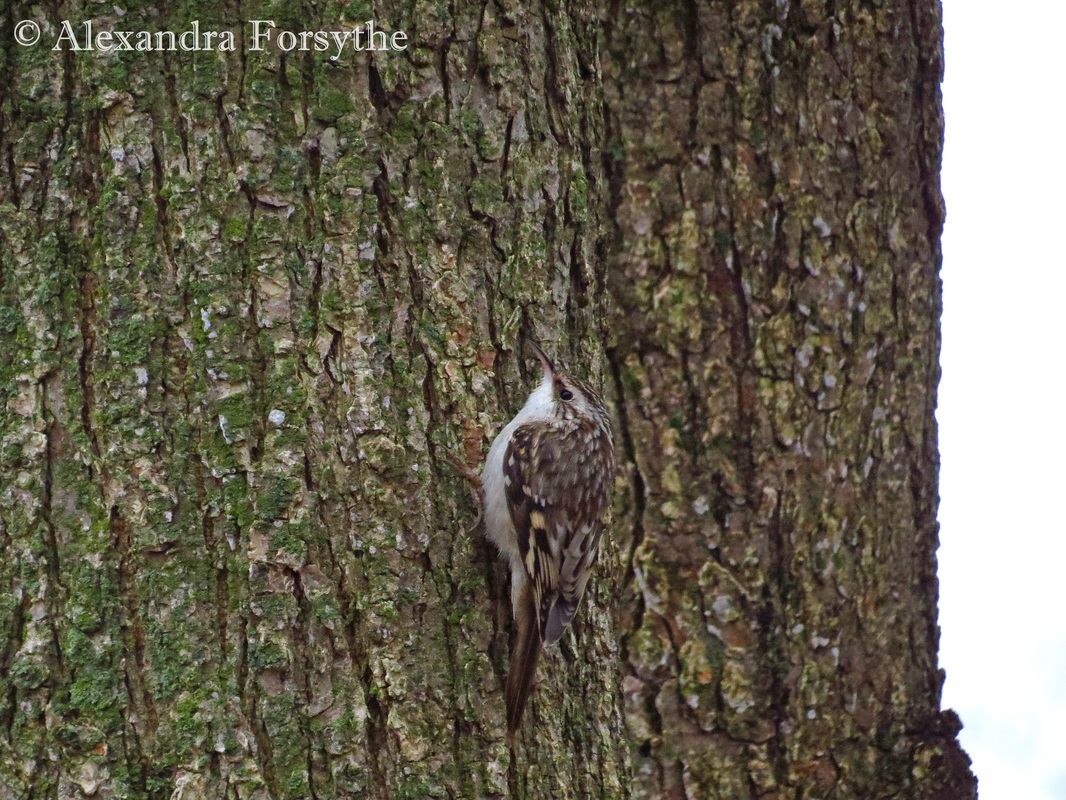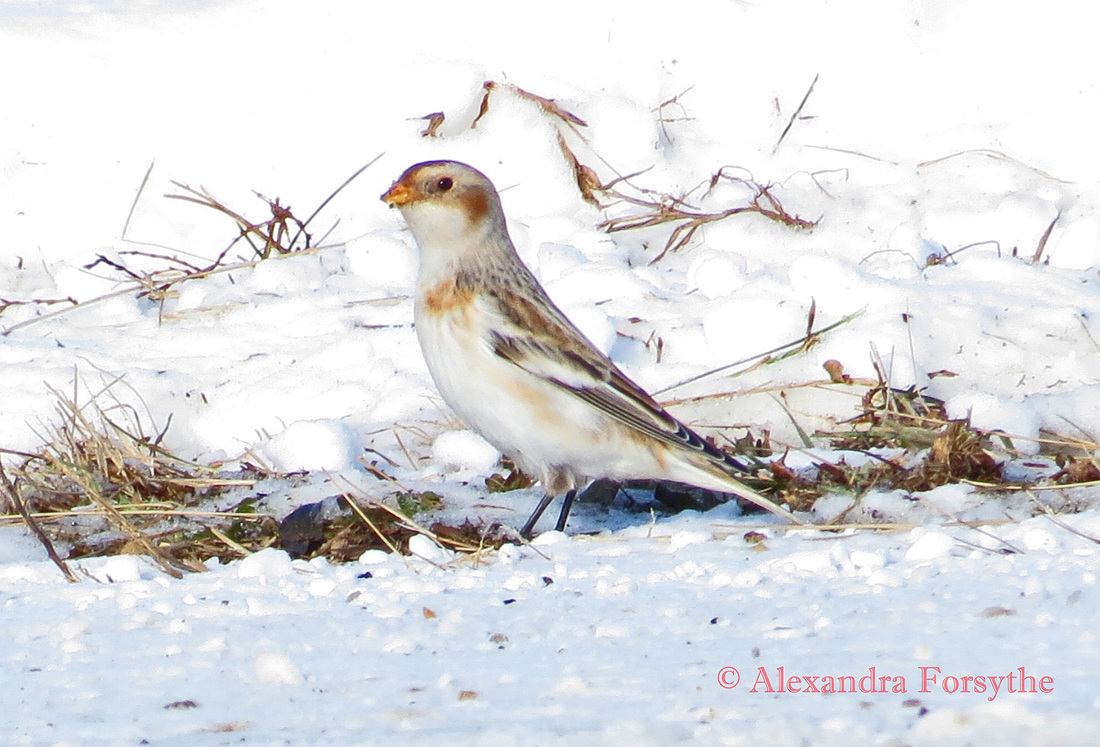I participated in five Christmas Bird Counts (CBCs) this year, and it's something that I would highly recommend to young birders in particular. I had the chance to explore different habitats, see a variety of birds, work with many experienced birders and learn from each of them while thoroughly enjoying their company.
Since each CBC is held in a different area, it only makes sense that the birding will be different in each CBC. I find it even more interesting that each CBC has its own personality. Some are more relaxed, others are more like a sporting event and others are more like a family reunion.
The Pokagon CBC has been a tradition for decades and Mr. Fred Wooley runs it like a well-oiled machine. Everyone is familiar with their routes, and they know where each species of bird is likely to be found. We tend to stick with the same teams each year, so reconnecting with your team members is a happy reunion. Plus, Mr. Wooley always makes everyone feel welcome. It's a very warm, supportive atmosphere. Birding with Holly Meyers, Brad Bumgardner (sadly unavailable this year) and the Lothamers is guaranteed to be filled with laughter. What better way to end the year than by sharing some giggles with your birding friends! The habitats in and around Pokagon are fantastic for birding, and since I volunteer there, it always feels like home to me.
The Fort Wayne CBC has also been running for decades, but it was new to me. Mr. Jim Haw, one of the state's best birders, is in charge of it, and he does a fantastic job. His organizational skills are surpassed only by his phenomenal birding skills (by sight and by ear). I was happy to be placed with people I had never met - I love meeting new birders! This CBC is the most competitive of the five; there is a contest to determine which team saw the rarest bird. During the day, the teams are secretive about their bird lists, only disclosing their most interesting birds when all of the teams have returned for dinner. The contest adds a bit of sport and mystery, with team members playfully whispering and hiding their lists.
Tippecanoe's CBC in Kosciusko County has a more relaxed atmosphere. I was on Mr. Steve Doud's team, and since he is like a grandfather to me, I always have a great time birding with him. Plus, with a variety of apples from Doud Orchards in the car, it's the tastiest birding adventure one could hope for. Even though we took more time watching and studying each species than in the other CBCs, we saw the most species and the most individuals. Sometimes slow and steady does win the race!
The Limberlost (Adams County) CBC has a wonderful mixture of professionalism and warmth. Terri Gorney, the modern-day Gene Stratton-Porter, makes every volunteer feel like a member of the family. Every route is excellent, so each team is likely to see interesting birds. The various habitats attract everything from Short-eared Owls to Common Mergansers. This year the weather wasn't ideal, but everyone still found great birds and they were treated to the utmost in hospitality.
The SW Allen County CBC is brand new for this year, and it's the brilliant idea of Cynthia and Ed Powers. It covers many birding hot spots: Eagle Marsh, Fox Island and Arrowhead Prairie. Being part of a new CBC was exciting - checking out areas via Google Earth and scoping out the territories in advance. Unfortunately, on the morning of the CBC, freezing rain caused the start time to be delayed until noon and the ice forced many volunteers to stay at home. Cold rain throughout the day hindered our ability to see and hear many birds. Nevertheless, we met new people, explored new areas and saw some good birds. Cynthia and Ed have a good idea with this CBC, and Natalie Haley of Fox Island is always a fantastic host, so I hope this one is on the books for next year, too.
Every young birder should find at least one CBC in their area and volunteer. It's a fantastic way to learn more about birds and birding from some of the best birders in the area, explore new areas, see some great birds and have a wonderful time.
Since each CBC is held in a different area, it only makes sense that the birding will be different in each CBC. I find it even more interesting that each CBC has its own personality. Some are more relaxed, others are more like a sporting event and others are more like a family reunion.
The Pokagon CBC has been a tradition for decades and Mr. Fred Wooley runs it like a well-oiled machine. Everyone is familiar with their routes, and they know where each species of bird is likely to be found. We tend to stick with the same teams each year, so reconnecting with your team members is a happy reunion. Plus, Mr. Wooley always makes everyone feel welcome. It's a very warm, supportive atmosphere. Birding with Holly Meyers, Brad Bumgardner (sadly unavailable this year) and the Lothamers is guaranteed to be filled with laughter. What better way to end the year than by sharing some giggles with your birding friends! The habitats in and around Pokagon are fantastic for birding, and since I volunteer there, it always feels like home to me.
The Fort Wayne CBC has also been running for decades, but it was new to me. Mr. Jim Haw, one of the state's best birders, is in charge of it, and he does a fantastic job. His organizational skills are surpassed only by his phenomenal birding skills (by sight and by ear). I was happy to be placed with people I had never met - I love meeting new birders! This CBC is the most competitive of the five; there is a contest to determine which team saw the rarest bird. During the day, the teams are secretive about their bird lists, only disclosing their most interesting birds when all of the teams have returned for dinner. The contest adds a bit of sport and mystery, with team members playfully whispering and hiding their lists.
Tippecanoe's CBC in Kosciusko County has a more relaxed atmosphere. I was on Mr. Steve Doud's team, and since he is like a grandfather to me, I always have a great time birding with him. Plus, with a variety of apples from Doud Orchards in the car, it's the tastiest birding adventure one could hope for. Even though we took more time watching and studying each species than in the other CBCs, we saw the most species and the most individuals. Sometimes slow and steady does win the race!
The Limberlost (Adams County) CBC has a wonderful mixture of professionalism and warmth. Terri Gorney, the modern-day Gene Stratton-Porter, makes every volunteer feel like a member of the family. Every route is excellent, so each team is likely to see interesting birds. The various habitats attract everything from Short-eared Owls to Common Mergansers. This year the weather wasn't ideal, but everyone still found great birds and they were treated to the utmost in hospitality.
The SW Allen County CBC is brand new for this year, and it's the brilliant idea of Cynthia and Ed Powers. It covers many birding hot spots: Eagle Marsh, Fox Island and Arrowhead Prairie. Being part of a new CBC was exciting - checking out areas via Google Earth and scoping out the territories in advance. Unfortunately, on the morning of the CBC, freezing rain caused the start time to be delayed until noon and the ice forced many volunteers to stay at home. Cold rain throughout the day hindered our ability to see and hear many birds. Nevertheless, we met new people, explored new areas and saw some good birds. Cynthia and Ed have a good idea with this CBC, and Natalie Haley of Fox Island is always a fantastic host, so I hope this one is on the books for next year, too.
Every young birder should find at least one CBC in their area and volunteer. It's a fantastic way to learn more about birds and birding from some of the best birders in the area, explore new areas, see some great birds and have a wonderful time.


 RSS Feed
RSS Feed
